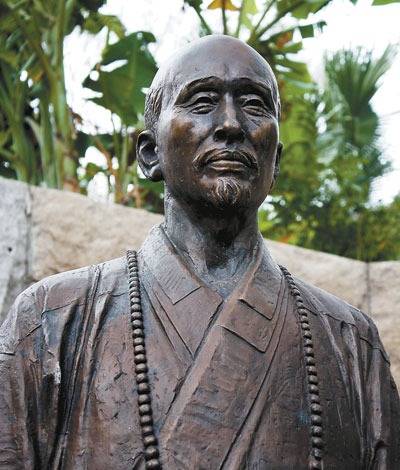
James Baquet jamesbaquet@gmail.com CHINESE Buddhism honors Four Great Masters of the 20th century: Taixu, Yinguang, Xuyun, and today’s subject, Hongyi. Born in a banking family in Tianjin in 1880, Master Hongyi was more than a monk. He was also an artist and an art teacher, as well as a musician, dramatist, poet and general man of letters. He studied at the famed Tokyo School of Fine Art in 1905, where he learned Western-style art and music, and had a girlfriend. (He wasn’t yet a monk.) He returned to China and taught art and music in several colleges, as well as composing songs which are still performed. He “took refuge” — became a Buddhist — in 1917, and a year later he became a monk. Thereafter, his art practice turned mainly to calligraphy. For the remainder of his life, Master Hongyi traveled widely to Buddhist sites in China, and also took the opportunity to pass on what he had learned of the Buddha’s teachings. His specialty was the “vinaya,” the discipline involved in the Buddhist life. Although Buddhism is not thought of as a strict religion, its “three trainings” are morality, practice and wisdom. It is the first — morality, or “right behavior” — that caught Master Hongyi’s attention. Perhaps this was because of the discipline inherent in learning the arts and music that he knew so well. He even went so far as to revive a school, the Nanshan Vinaya School, to promote these teachings. Before his death in 1942, his final piece of calligraphy put all he had learned into four simple characters: beixi jiaoji, “Worldly joys and sorrows are intertwined.” | 
